The Most Affordable Places To Retire Near You

Retirement can change your perspective on a lot of things. While you might happily accept higher costs in exchange for any number of nearby benefits when you're still raising a family or working, living on a fixed income can make you focus on every dollar you spend. After all, your nest egg is there not just to provide for the basics but to help you enjoy life without having to clock in five days a week. What you spend on housing or on your monthly electric bill, it's all money you can't spend on travel or leave to your grandkids.
Read: 10 US Cities With Plenty of Jobs and Cheap Housing
Find: 3 Ways To Recession-Proof Your Retirement
That's why GOBankingRates has nailed down the most affordable cities and towns in every state, helping you to see which places might help you to get more out of your life's savings. The study looked at Zillow's Home Value Index (ZHVI) to get a sense of the local housing market. This is an index that adjusts for seasonality and the housing market to give a smoothed-out sense of what the average home in the area is worth. Then it added the cost-of-living scores from Sperling's Best Places to give you a clear sense of which places you can expect to save you money. Then, to identify which affordable locales might be most appropriate for retirement, the study also took the percentage of the population over the age of 65 and the city's livability score from AreaVibes -- a metric that combines a city's crime rates, amenities and quality of basic public services to give a final score between 1 and 100 for how "livable" it is. The towns in each state then were scored and ranked on those four categories to determine which towns are the most affordable while still being desirable to retirees.
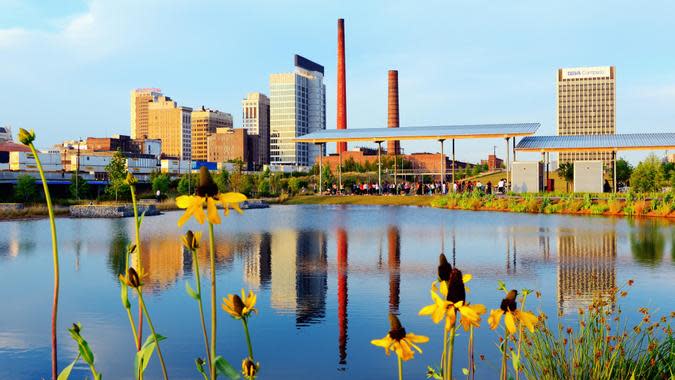
Alabama
Gadsden
Birmingham
Decatur
The best place in Alabama for retirement is Gadsden, which is in the northeastern part of the state, about an hour from the Georgia border. The city has an average Zillow home value (ZHVI) of $82,312, a cost-of-living score far below average -- 72.4 -- and a livability score of 63. It has a decent population of seniors, as well, at 18.4% of the population.
If Gadsden isn't exactly in your backyard, Birmingham and Decatur also finished in the top three and offer some options. Birmingham is about an hour southwest and Decatur nearly two hours northwest of Gadsden, and both have a senior population of at least 15% and a cost of living score substantially below the national average.
Decatur is nestled in the north part of the state, near the Tennessee border. While the ZHVI of $184,963 is almost double that of Birmingham at $95,388, it's cost of living score is an affordable 80.4%, and the livability score is 74.
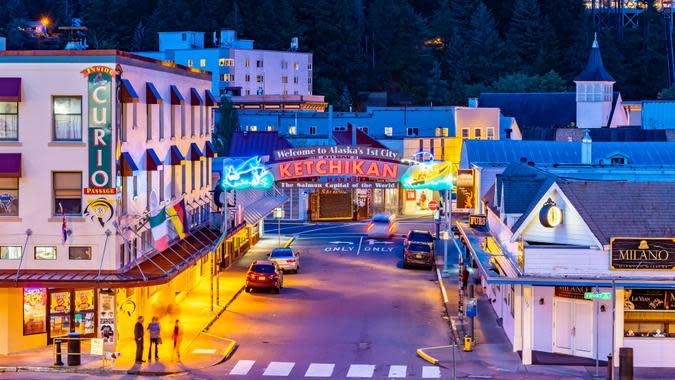
Alaska
Fairbanks
Ketchikan
Wasilla
Alaska is ensconced in natural beauty - and you'll find it each of the three cities on this list. Fairbanks, one of the largest cities in the state, is surrounded by the Chena River State Recreation Area. And while Frank Sinatra dubbed New York "the city that never sleeps," you might say that about Fairbanks, which has 24-hour-a-day sunlight for 70 days from May 17 to July 27. Ketchikan, meanwhile, is tucked into the area that stretches along British Columbia and sits amid the Glacier Bay National Park and Preserve. And the Chugach and Takeetna mountains surround Wasilla, which is the home of the Iditarod Sled Dog Race.
The good news about retiring in any of these three Alaska locales? Each of the cities has a population of 65-plus of 11.4% or more, with Wasilla coming at 16.6%. The bad news? The cost of living in each city comes in over the national average, with two of the three cities - Fairbanks and Wasilla - with a livability score in the 50s.
Take Our Poll: Would You Move for a Job That Paid You a $10,000 Signing Bonus?
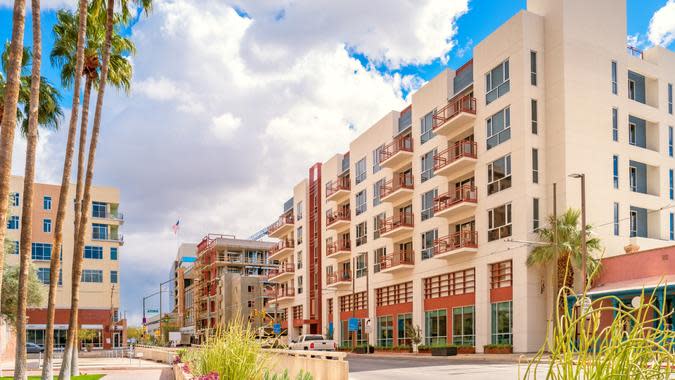
Arizona
Yuma
Surprise
Tucson
With its warm weather and abundant outdoor recreation, Arizona draws retirees. And Yuma ranked first among the GOBankingRates study as the top place to retire in Arizona.
Yuma and Tucson, the No. 3 finisher on the list, are located in Arizona's southern tier. The cities are sandwiched between Surprise, which sits in the Phoenix metro area. Of course, if it's the monthly bills you're worried about, Yuma is the cheapest when it comes to basic necessities, with the cost of living score 8.5% below that national average, and the ZHVI of $272,670 adds to Yuma's affordability. Since things are more expensive in the Phoenix metro area, it shouldn't surprise anyone that Surprise has a ZVHI of $436,610 and a cost of living 7.6% above the national average. However, its population of ages 65-plus is 22.8%, and the livability score comes in at a whopping 84.
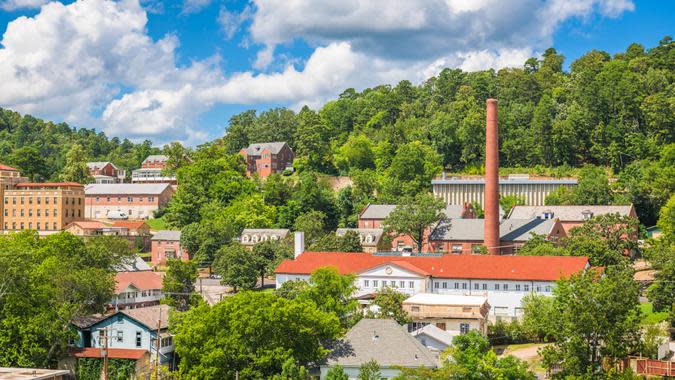
Arkansas
Texarkana
North Little Rock
Fort Smith
Texas border city Texarkana is one great place to live if you want to save money -- the cost of living there is almost 30% lower than the national average.
But whether you retire in Texarkana, North Little Rock in the central part of the state or Fort Smith on the Oklahoma border, you'll find affordable home prices and a low cost of living. Fort Smith has the highest ZVHI on the list at $150,307 but still has a cost of living 25% less than the American average.
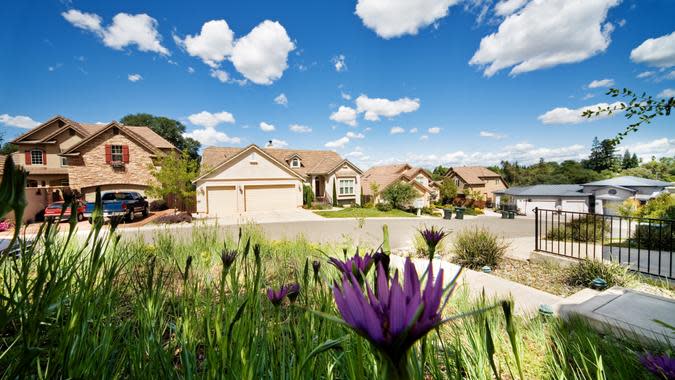
California
Bakersfield
Fresno
Sacramento
While California has a well-deserved reputation as being an especially expensive place to live, that doesn't mean there aren't pockets of affordability. Retirees can start their search for homes in the Golden State in Bakersfield, Fresno and Sacramento. While living in any of those California locales is more expensive than the national average, Bakersfield and Fresno come in at 3.4% and 3.3% higher, while Sacramento is 21.6% more. The ZHVI is $357,674 in Fresno and $368,729 in Bakersfield, with Sacramento about $100,000 higher.
Fresno and Bakersfield are in California's Central Valley in the I-5 corridor, and the state capital of Sacramento is in Northern California. If being surrounded by people your age is important to you, California might not suit your needs. Sacramento tops this list with a 13.3% population of people 65-plus, while the other cities are in below 12%.
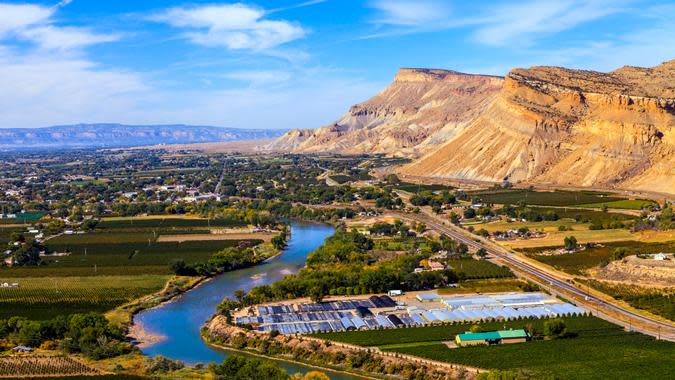
Colorado
Pueblo
Loveland
Greeley
Not unlike Alaska, it would be difficult to find a place to live in Colorado that wouldn't come with an incredible natural setting. But in the past several years, Colorado home prices have trended up, with Denver's median housing price being about $560,000 at the end of 2022 - double what it was in November 2014 and about $110,000 higher than prices at the start of the pandemic, according to Zillow.
Pueblo, which is adjacent to Lake Pueblo State Park, offers the Colorado lifestyle and at a cost of living of more than 11% below the national average, with housing prices about half of what they are in Denver. Pueblo's ZHVI is $285,202, while it is much higher in Loveland and Greeley, the other cities in the survey, which came in at $497,103 and $411,605, respectively. Loveland's livability score of 83 factored into making it a place for retirees to consider.
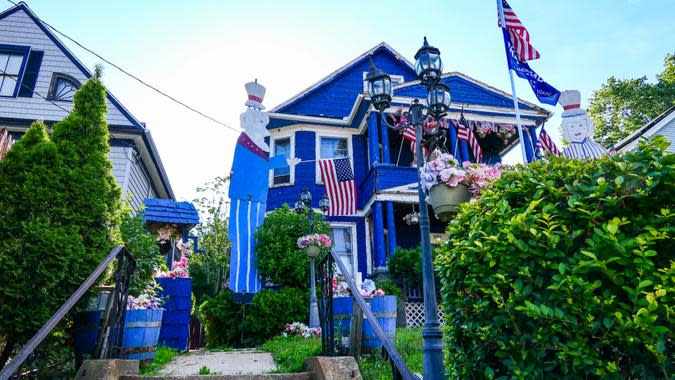
Connecticut
Middletown
Bristol
Meriden
Certainly, if you're retiring to Connecticut you should expect a different standard of affordability than what you might find in the Midwest or South, but that doesn't mean you still won't have options. Middletown and Bristol each have a cost of living less than 3% above the national average, while Meriden ranks about 1% below the average.
Even in Middletown, the home value index of $293,889 is going to be in reach of many people as they enter retirement - and it comes with a livability score of 83 and a 65-plus population of 16.2%. Bristol and Meriden also have ZHVIs of less than $265,000.
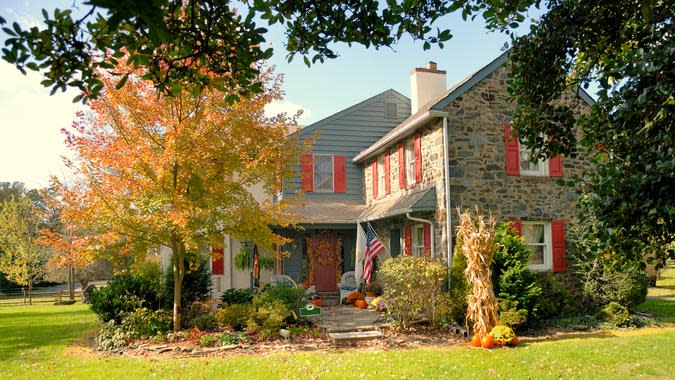
Delaware
Seaford
Milford
Dover
Seaford, Milford and Dover all have costs of living at least 5% under the national average -- though Milford's ZHVI of nearly $310,129 is higher than the other locales listed here. It's $265,219 in Seaford and $285,793 in Dover.
If living among people your age is a criteria as you choose where to retire, Milford should fall under consideration. After all, more than a quarter of its residents - 25.8% -- are 65 and older.
Live Richer Podcast: Scamdemic - Don't Fall Victim to These Money Scams
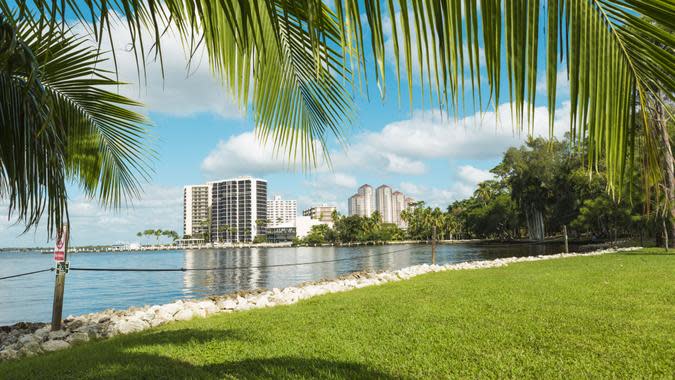
Florida
Cape Coral
Port Saint Lucie
Jacksonville
You'll likely be in for plenty of sunshine regardless of where you live as long as it's in Florida, and there's nowhere in the state that's all that far from the beach. But in the case of all three of these affordable locales, they're right on the water. Port St. Lucie is on the Atlantic Coast between West Palm Beach and the Canaveral National Seashore and has a high livability score of 83. Jacksonville is likewise on the Atlantic, though much farther up the coast near the border with Georgia.
Cape Coral, meanwhile, is across the state on the Gulf Coast. Cape Coral does have a cost of living that's 4.2% higher than the norm, but it also boasts a livability score of 83, which might make up for its cost of living. While Cape Coral and Port Saint Lucie both have a ZVHI approaching $400,000, it's just $291,882 in Jacksonville.
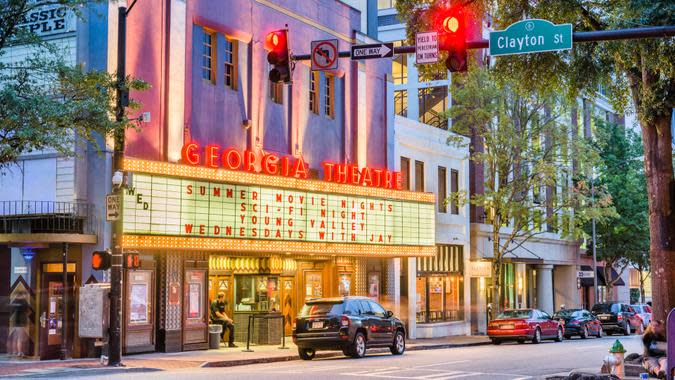
Georgia
Macon
Columbus
Augusta
Georgia is one state where you can find some extremely affordable places to retire. Both Macon and Columbus have a ZHVI of under $140,000 and average costs of living about 24% under the national average, meaning you would have that much more of your nest egg to commit to something other than bills.
Augusta might be associated largely with its exclusive golf club, but the cost of living there is still about 20% below the nation as a whole and a typical home is still just over $160,000.
The downside of all three places is a low livability score. Macon's is 58, while it is 60 in Columbus and 61 in Augusta.

Hawaii
Hilo
Wailuku
Pearl City
Given just how much of Hawaii's food and other basic goods must be shipped great distances across the Pacific, costs of living there are much higher than anything you might see elsewhere. However, if you're retiring to Hawaii, you might be willing to eat those costs because, well, it's Hawaii. And while none of these towns are affordable when stacked up against most other states, their affordability relative to the rest of the state might actually make retiring to this Pacific paradise realistic.
Notably, Hilo's ZHVI comes in at about $485,000 -- almost $400,000 less than Wailuku and close to half the $958,832 in Pearl City. Likewise, in Hilo, the cost of living comes in "only" 26% higher than the national average, while the other two locations come in substantially higher - 53% in Wailuku and 84.4% in Pearl City.

Idaho
Ammon
Lewiston
Pocatello
Based on livability scores alone, Idaho residents probably will consider staying in the state to retire. Ammon, the top of three places on the Idaho list, has a livability score of 87, while they are a decent 78 and 76 in Lewiston and Pocatello, respectively.
But it's not just that these are nice places to live, they're also great places to save money. Ammon, Lewiston and Pocatello all have a cost of living under the national average. In Pocatello, it's nearly 14% less than the average, and the ZHVI is $302,147 - about $105,000 less than in Ammon.
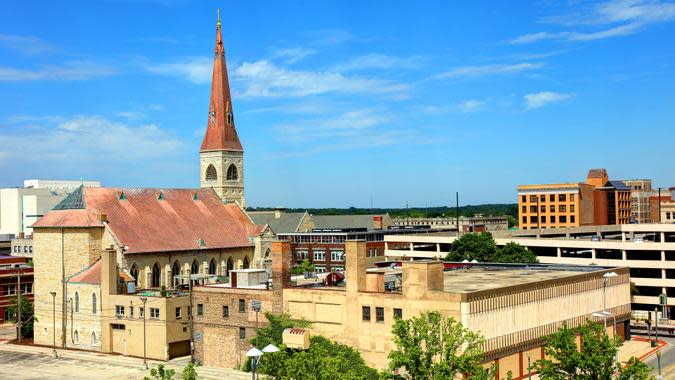
Illinois
Springfield
Peoria
Bloomington
While the greater Chicago area is home to its share of high-priced enclaves, the state of Illinois is a lot bigger than the Windy City and has plenty of burgs where you'll be saving a lot when compared to the average American. Three places -- Springfield, Peoria and Bloomington -- all have costs of between 17% and 26% below the national average.
And it's not just the money you can save once you're living there; the cost of buying a home will make many of these locales ideal for retirees. Bloomington's ZVHI is $212,008, which sounds great until you realize that it's $135,537 in Springfield and $104,230 in Peoria.
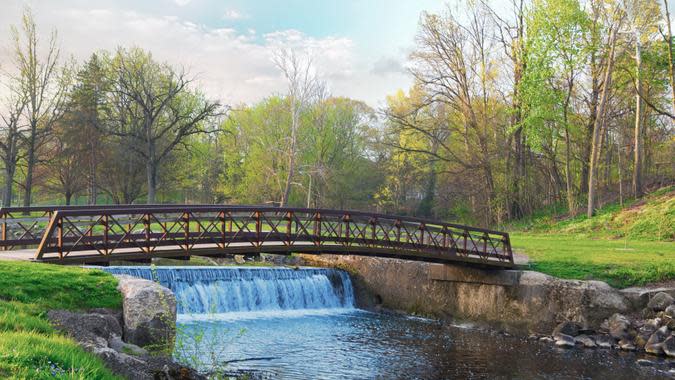
Indiana
Kokomo
Muncie
Terre Haute
If you live in Indiana, stay there for retirement. When it comes to Kokomo, the city north of Indianapolis and southwest of Fort Wayne has a ZHVI score of $139,367 - and for this list, that's high. The ZVHI in Muncie is $115,594, and in Terre Haute, it's $124,614.
And the affordable cost of your home gives way to consistently lower bills. All three places have about 25% -- or more -- less than the average cost of living in the U.S.
$2,000 Quarter? Check Your Pockets Before You Use This 2004 Coin
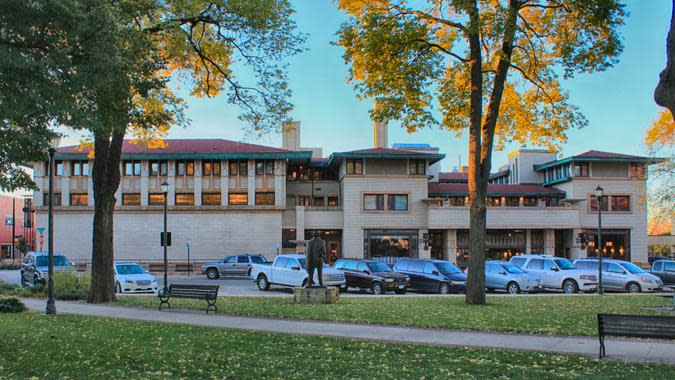
Iowa
Waterloo
Sioux City
Davenport
About an hour northwest of Cedar Rapids, you'll find Waterloo, which combines a 16.3% population of residents 65 and older, an amazing cost of living and affordable home prices.
Waterloo has a ZHVI of $126,225 and a cost of living 28% less than the national average, but Sioux City and Davenport also fit the bill when it comes to affordability and offer different ways of life. Sioux City, which is on the western side of Iowa and cradles on the Nebraska border, has a cost of living 25% below average and housing costs at a $165,672 average. On the eastern border with Illinois is Davenport, with housing costs a smidge lower than Sioux City and overall cost of living 21.5% less than the average.
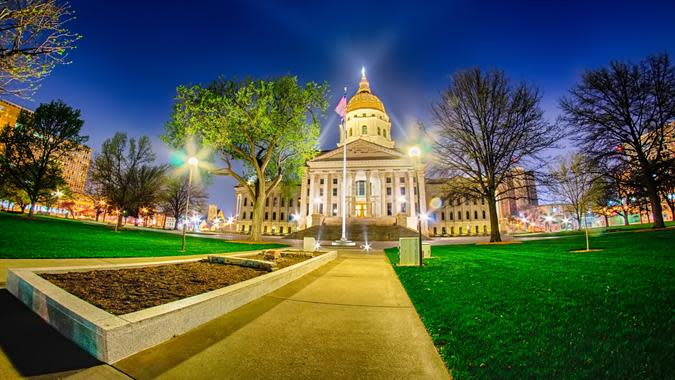
Kansas
Hutchinson
Salina
Topeka
Kansas, like Iowa to the northeast, also provides a choice of well-priced communities for retirees, from Hutchinson and Salina -- centrally located in the state -- to Topeka, an hour west of Kansas City, Missouri. Hutchinson, with a livability score of 70, registers a cost of living 28% lower than the national average, and the ZHVI score is under $120,000.
Salina and Topeka offer housing prices a tad under $160,000 and a cost of living at least 21% below average. But no matter which city you choose, you'll be surround by neighbors with a similar background. Each of the three options is in the 17% to 18% range when it comes to residents age 65 or older.
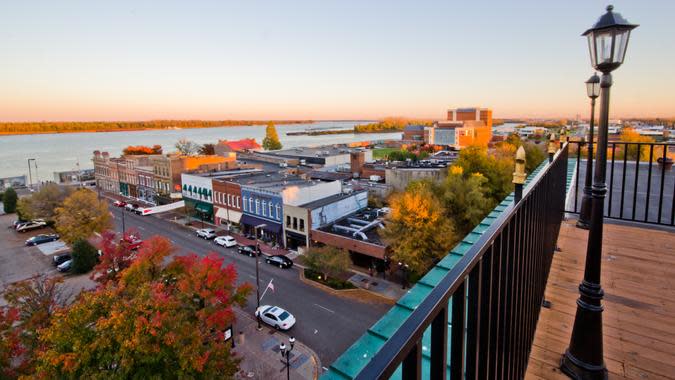
Kentucky
Henderson
Hopkinsville
Owensboro
Kentucky's profile is much like that of Kansas' best places for retirees. Henderson, Hopkinsville and Owensboro offer a ZHVI of less than $180,000, a cost of living from 19.8% to 26.7% of the national average, and populations made of up of more than 16.7% of residents 65 and older.
What will guide your decision-making when it comes to retiring in Kentucky could be where you want to live in the state. Henderson lies along the Ohio River, which provides the boundary between Indiana and Kentucky, and the same can be said for Owensboro, which is about 30 miles to the east of Henderson. Hopkinsville is in the southwestern part of the state, nestled against the Tennessee border.

Louisiana
Shreveport
Alexandria
Monroe
Northwest Louisiana's largest city, Shreveport, tops the list of affordable locales in the state. Home values there average about $125,000 while the cost of living is over 23% less than the national average. Alexandria, just south of the Kisatchie National Forest, also is south of Monroe, which is surrounded by wildlife areas in its location about an hour from the Tennessee border.
All three locations have a have housing costs less than $131,000 and costs of living well below the national average. Your retirement dollars will go farther in Louisiana.
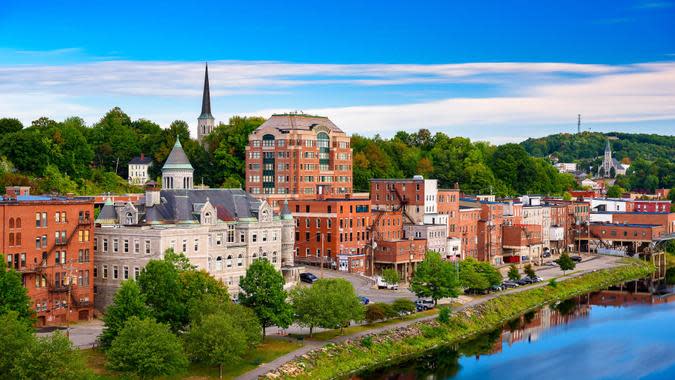
Maine
Bangor
Waterville
Augusta
There's a lot to like about living in Maine, given its proximity for travel to the eastern provinces of Canada, the smell of the sea air and the breathtaking views of the Atlantic Ocean, and its spectacular four-season experience.
And retiring in Maine will cost much less than in its neighbor to the south, Massachusetts. Bangor, Waterville and Augusta all have average home values less than $231,000, with Waterville's a bit less than $200,000. The cost of living in Bangor is 16% below the national average - the highest on the Maine list. In Augusta, the 23.1% percent of residents 65 and older is among the most in the study.
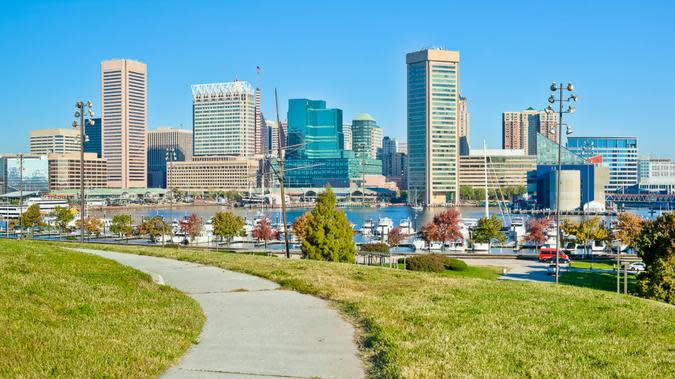
Maryland
Dundalk
Bel Air
Towson
Your options for affordable places to retire in Maryland vary widely. Dundalk, about 10 miles from Baltimore's inner harbor, has a ZHVI score of about $188,000, with a cost of living roughly 10% under the national average. Its livability score is on the low side, too, at 63.
Bel Air and Towson, with livability ratings of 79 and 73, respectively, are considerably more expensive places to live. The cost of living for both locales is more than 11% above the national average, and housing costs exceed $420,000 - more than double the Dundalk price.
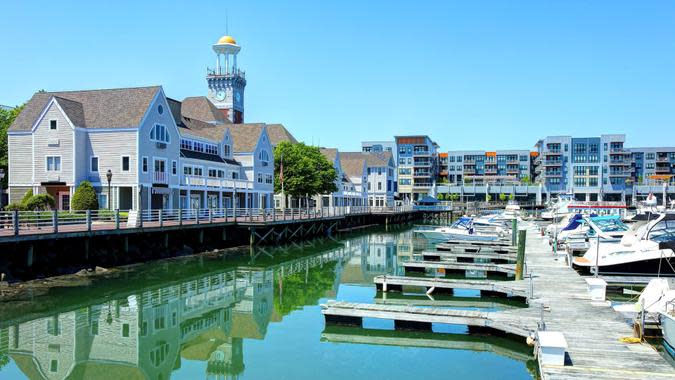
Massachusetts
New Bedford
Worcester
Haverhill
New Bedford -- home to the New Bedford Whaling Museum -- is a coastal community with the lowest housing costs ($359,757) and livability score (59) -- in Massachusetts in the study. While the livability numbers go up in Worcester and Haverhill at 61 and 66, respectively, so do the costs of living.
The ZHVI in Worcester, located in a more central part of the state, is $372,221, with a cost of living 5.1% over the national average. Haverhill, about 35 miles north of Boston, has housing costs just shy of $500,000 and costs of living nearly 17% above the national average.
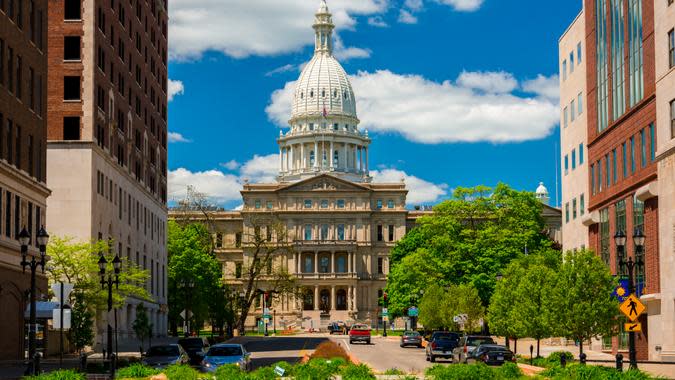
Michigan
Lansing
Westland
Livonia
Lansing is Michigan's state capital and a lovely place to live, and having Michigan State University nearby means there's an abundance of amenities. More to the point, though, the typical house is valued at under $130,000, and the cost of living sits roughly 22% below the national average.
Livonia, a western suburb of Detroit, has the highest livability score in the study at 89, its cost of living is still a dot under the national average, and its ZHVI is 265,535. Westland also has favorable numbers across the board - housing costs of $182,000 and a cost of living more than 8% below the national average, plus a livability score of 75.

Minnesota
Duluth
Rochester
St. Cloud
How much you actually enjoy a retirement in Minnesota is going to have a lot to do with how well you can handle winter weather. However, if you are a snowbird, Duluth could be just the ticket for you. The town might be among the northernmost in the Land of 10,000 Lakes -- sitting on Lake Superior near the border with Wisconsin -- but it's also among the friendliest to your wallet with a ZHVI score just over $237,000 and a cost of living about 15% under the national average.
Rochester, where necessities cost 7.5% less than the national average, is about 90 miles southeast of Minneapolis and also scores high on the livability scale at 85. The third entry on the list, Saint Cloud, lies the opposite direction, about 65 miles northwest of Minneapolis. At 66, it doesn't rank particularly high for livability, but its ZHVI value is less than $225,000 and your dollar will go 15% farther than the national average.
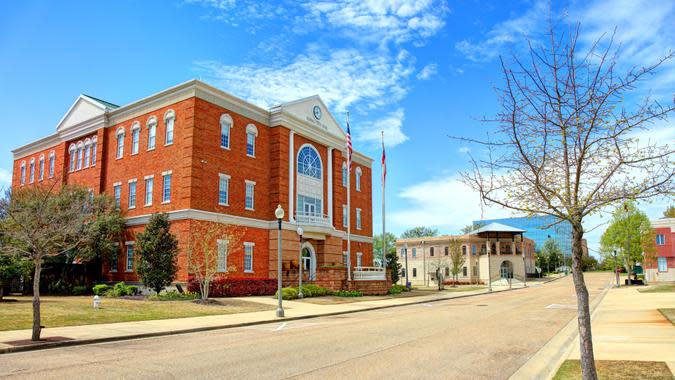
Mississippi
Greenville
Meridian
Tupelo
Mississippi is among the places with the lowest cost of living in the country, so "affordable" is going to mean something radically different than it does in states such as California or Massachusetts. So if living in the birthplace of the blues strikes you as appealing, you're in luck. You'll save a mint in the process.
The median housing costs in Greenville are about $85,000, and the cost of living is almost 30% less than the national average. The tradeoff? Its livability score is 57. That number rises to 61 in Meridian, where the ZVHI is about $108,000 and the cost of necessities remains low at more than 28 percent of the national average.
Tupelo is the birthplace of Elvis Presley, and you can still visit his birthplace on the east side of town. Though, with a ZHVI score over $173,000, houses in Tupelo actually are a little steep compared to the rest of this list.

Missouri
Joplin
St. Joseph
Florissant
Southwest Missouri's Joplin has a lot going for it. Not only is it affordable to live there -- a ZHVI of $167,000 and a cost of living 25% below the national average -- but it's also a good place to hide out if you're an interstate bank robber. Or at least, that's what one might assume given that the town is home to the historic Bonnie and Clyde Garage Apartment, which the criminals could have accessed from Route 66.
Saint Joseph is on the state's western side near the border with Kansas, sitting on the Missouri River, and has median housing costs of $128,128 but a livability score of just 59. Florissant, a St. Louis suburb, is on the other side of the state along the other big river -- the mighty Mississippi - and has the highest livability among the study's Missouri locations at 76, with housing costs less than $175,000.
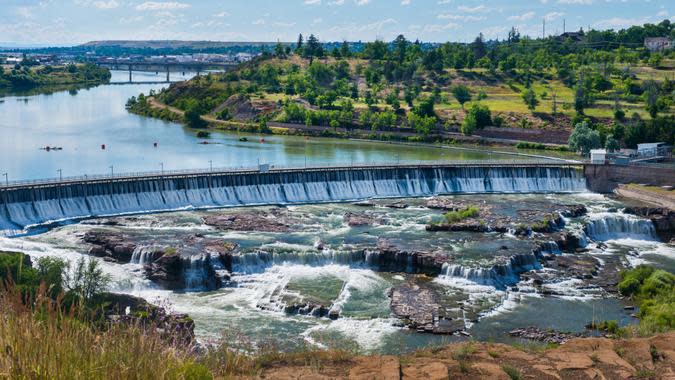
Montana
Miles City
Anaconda-Deer Lodge County
Havre
Big Sky Country gives way to the glorious, majestic peaks of the Rockies when you're traveling east to west. For the entire state, though, low costs of living appear to be pretty consistent.
Miles City, on the North Dakota side of the state, might fill your retirement wish list. It's got a livability score of 80, a cost of living almost 20% below the national average, and a ZHVI of just shy of $255,000. About 20% of the residents are 65 and older, too. While Anaconda Deer Lodge on the Idaho side and Havre, near the Canadian border, have livability marks in the 60s, their housing prices are a little bit lower than Miles City and the cost-of-living scores and percentage of seniors are strong, too.

Nebraska
Beatrice
Hastings
Scottsbluff
Cornhuskers -- just like the Hawkeyes next door -- can boast some pretty low costs of living and housing values, making this a great option for retirees interested in living out their golden years on the Great Plains of the American interior. For the most part, you can expect to save 20% or more on the average American's cost of living in these locales, and you also can expect to find home values in the range of $145,000 to $165,000 -- something that will likely mean a lot more options for most people shopping for a retirement home.
Something that really stands out about this Nebraska list are the livability scores of 85 in both Beatrice and Hastings.

Nevada
Pahrump
Mesquite
Elko
There's much more to Nevada than the gaming havens of Las Vegas and Reno, and its abundance of natural beauty often is overlooked.
Nevada, however, falls in line with other western state in terms of costs of living and is on the more expensive side among the 50 states. Housing costs in Pahrump, west of Las Vegas on the California border, ring in at a tick under $340,000, and the cost-of-living score is 4% under the national average.
The ZHVI in Elko, in Nevada's northeast, is almost $310,000, but the cost of living score sits about 2% over the national average - same as in Mesquite, where housing median values are approaching $400,000.
But something is drawing seniors to both Pahrump and Mesquite, which is east of Las Vegas on the Utah state line. After all, 42% of the residents of Mesquite are 65 and older, while it's 31.6% in Pahrump.
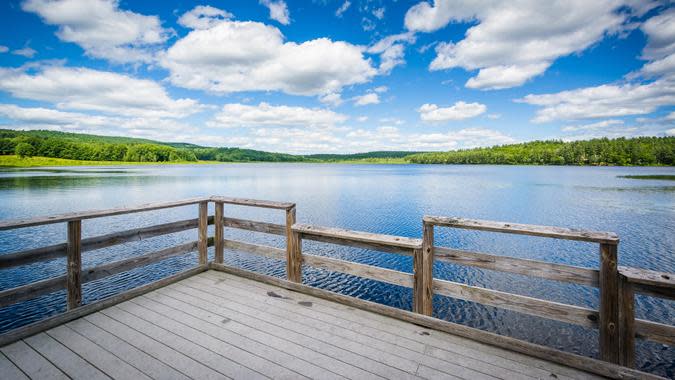
New Hampshire
Claremont
Keene
Concord
If you're looking for a chance to retire in a beautiful natural setting while keeping your costs low, some areas in otherwise pricey New Hampshire could fit your needs. Claremont, near the state's border with Vermont, boasts a ZHVI of $211,172 and a cost of living 20% below the national average. Keene, in the southwest corner of the state, and the capital of Concord also have a cost of living below the national average.
Retirees will find housing in Keene about $100,000 less than the approximately $375,000 median price in Concord.
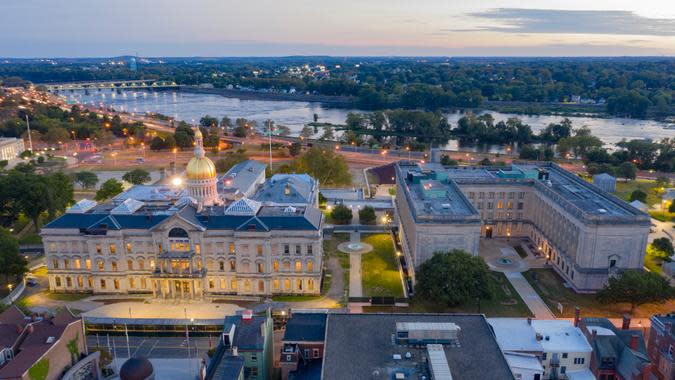
New Jersey
Toms River
Vineland
Clifton
New Jersey has the highest population density in the country, but that doesn't mean you have to be stuck in urban sprawl. Toms River, for instance, sits on the Atlantic coast with both the Brendan T. Byrne and Wharton state forests just inland and the Cattus Island Country Park on the seaside.
That said, "affordable" means something a little different in Jersey than some of the nation's cheaper states. Clifton made the top three despite a ZHVI price of $475,000 and a cost of living more than 26% higher than the national average. In Tom's River, the median housing price is about $100,000 less.
But, if you want to retire in New Jersey without spending a ton, look no further than Vineland, located about 40 miles south of Philadelphia. The typical home in Vineland costs about $240,000, and the cost of living is just 88% of the national average.
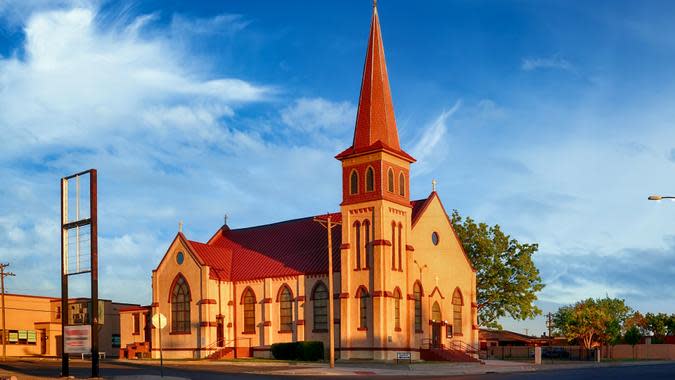
New Mexico
Alamogordo
Roswell
Carlsbad
In the southern part of New Mexico, you'll find Alamogordo, Roswell and Carlsbad, all affordable options for retirees. Each location has median housing values of less than $200,000 and cost of living scores that are more than 25% less than the national average. Look at how much farther your money will go.
Roswell has the least expensive housing values at $156,112, but it is dragged down by its livability score of 62. Alamogordo's ZHVI of $180,881 and livability score of 72 likely has attracted people 65-plus, who make up 18.8% of the city's population.
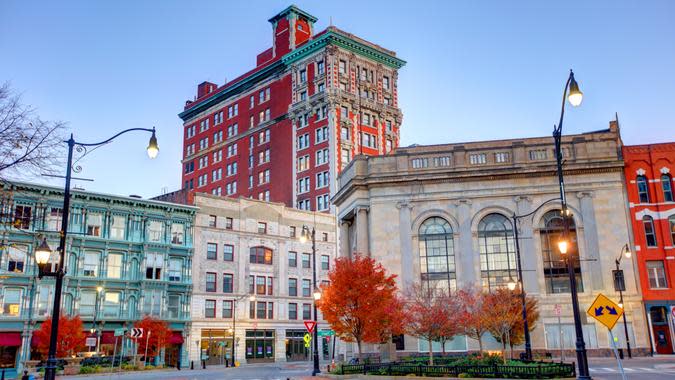
New York
Utica
Buffalo
Schenectady
Brace yourself: New York City is not among the three most affordable areas in the Empire State. That might come as a real shock to those with absolutely no familiarity with real estate in the Big Apple, but the vast majority of New York isn't the city. The upstate cities of Utica, Buffalo and Schenectady offer the combination of lower housing median values and a cost of living ranging from 7% to almost 17% below the national average.
The downside to living in the three urban areas is the livability score, with all three tallying a 63. The upside is housing prices of about $160,000 in Utica, $200,000 in Buffalo and $250,000 in Schenectady. Each city also offers proximity to some of the most wondrous sites in the state - Buffalo to Niagara Falls, Utica to the hiking trails and snowshoe areas of the Mohawk Valley, and Schenectady to the vast Adirondack Park to the north.

North Carolina
High Point
Winston-Salem
Greensboro
High Point, Winston-Salem and Greensboro are clustered together right in the middle of the state, and you could hit all three cities in about an hour's drive time. Taken together, the region is known as The Piedmont Triad, and it is a center of commerce and education. If you want a part-time job or to take a class to stay active in retirement, The Triad is the place to do it. After all, the region has about 900,000 jobs and more than 20 colleges, universities, vocational schools and community colleges.
Given their proximity to one another, it's no surprise that the cities share several similar characteristics. Each city has a livability number in the low- to mid-60s,their housing prices are less that $230,000 and the cost of living is at least 17% below the national average.

North Dakota
Grafton
Valley City
Jamestown
Grafton, in the Red River Valley in northeastern North Dakota, is known for its farming. The small town of 4,200 or so people offers a quiet and affordable way of life for retirees. In fact, 20.6% of its residents are 65 or older, and they enjoy a ZHVI of just $111,674 and a cost of living that is nearly 30% below the national average. To top it off, the livability score is a decent 75.
But North Dakota retirees who settle in Valley City or Jamestown will find themselves between the capital of Bismarck and the biggest city, Fargo. Jamestown, in fact is about equidistant between the two cities. The livability score in Valley City is 85, and in Jamestown, it's 82. In both locales, the cost of living is 20% below the national average, and median housing prices fall in the $165,000 to $180,000 range.
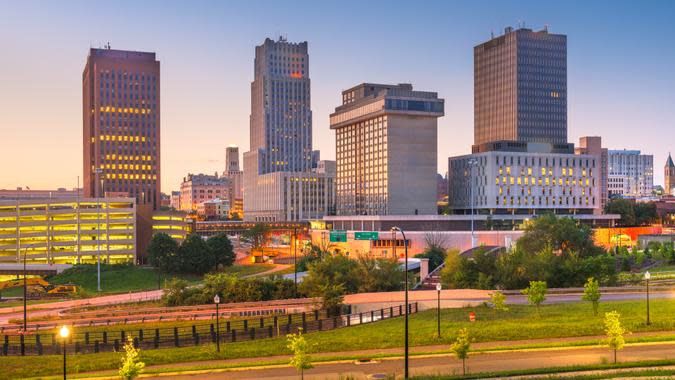
Ohio
Youngstown
Akron
Lorain
There's affordable and then there's Ohio. Youngstown offers one of the best options for retiring on a tight budget of any of the cities listed in the entire study. The ZHVI score is just over $50,000. What's more, the cost of living there is almost 35% below the national average, so savings aren't just coming from when you purchase your home.
And while nowhere else can quite match Youngstown for a buyer's market on houses, Lorain and Akron also have ZHVI scores under $120,000 - Akron's is closer to $100,000 -- and savings on the cost of living hovers around 30% compared to the country's average.
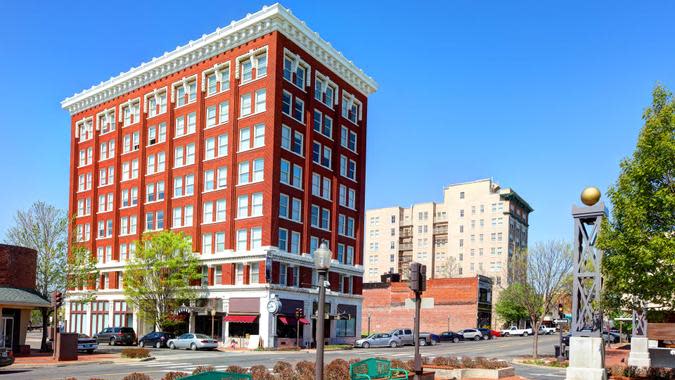
Oklahoma
Enid
Shawnee
Muskogee
While no one Oklahoma city can quite match Youngstown for its rock-bottom costs, the collection of municipalities on Oklahoma's list is on par with Ohio's for overall affordability. Enid has a ZHVI of $108,964 and a cost of living 27% below the national average.
Situated roughly halfway between Oklahoma City to the south and Wichita, Kansas, to the north, Enid is made of a population base of about 15% of people 65 and older. Shawnee, east of Oklahoma City, and Muskogee, located southeast of Tulsa, has homes with a median value of less than $130,000.

Oregon
Keizer
Albany
Salem
Surprisingly, Oregon has median housing prices even more expensive than its neighbor to the south, California. In Keizer, retirees can expect to spend a few dollars less than $420,000 for a home and about 6% more on necessities.
Keizer is about 4 miles north of Salem, where average home prices are about $406,000 and cost of living 2.4% higher than the average. Albany's numbers are very similar.
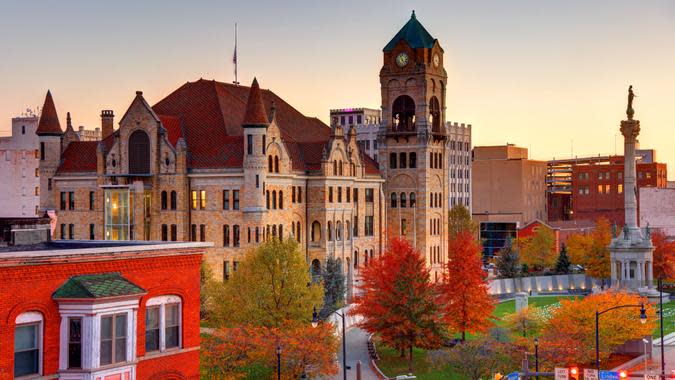
Pennsylvania
Altoona
Wilkes-Barre
Scranton
If you retire in Altoona, about 100 miles east of Pittsburgh, your kids and grandkids will visit often. How can you be sure? They'll want to trek to Lakemont Park, which opened in 1894 and features what Altoona's tourism website says is the world's oldest wooden roller coaster, called the Leap-the-Dips. The roller coaster dates to 1904.
Altoona's cost of living won't put you on an economic roller coaster. Expect to spend about 25% less for necessities in Altoona, where the ZHVI is $119,913. Also affordable are the almost-adjacent cities of Wilkes-Barre and Scranton, which sit two hours or so north of Philadelphia. They are dinged for low livability scores - 59 and 63, respectively.
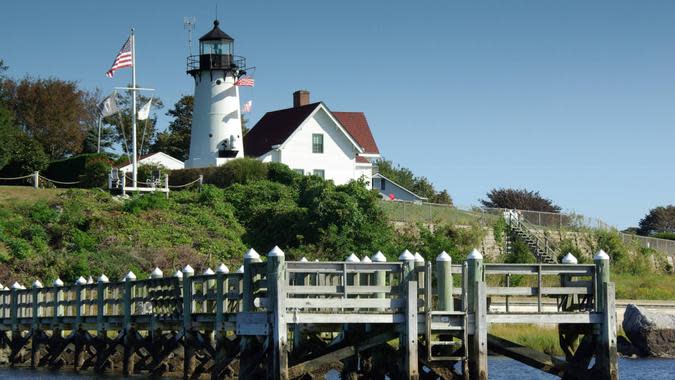
Rhode Island
Warwick
East Providence
Cranston
The nation's smallest state can't boast similarly tiny home values, unfortunately for retirees interested in buying there. Warwick is the most affordable of these places with a median home price of $334,151, with East Providence about $10,000 higher and Cranston another $20,000 over that.
And that's complemented by costs of living that are consistently above the national average. In the case of Cranston, costs run nearly 12% higher than the national norm.
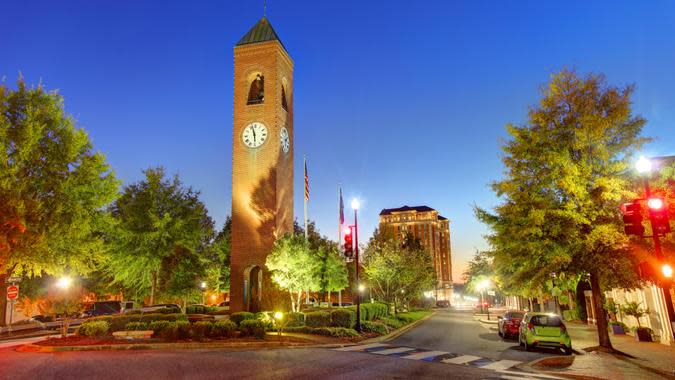
South Carolina
Aiken
Florence
Spartanburg
Just south of I-20 and west of Augusta, Georgia, you'll find Aiken, which combines a livability score of 67 with home values that average out to under $217,000 and a cost of living about 14% below average.
If you're interested in a more affordable place, your best option is probably Florence -- which has home values under $192,000 and a cost-of living score that is about 20% below the national average
Another affordable option is Spartanburg, which has home values of just over $192,000, but it also has a livability score of 62, just above Florence. Spartanburg also has a cost of living of about 19% below average.
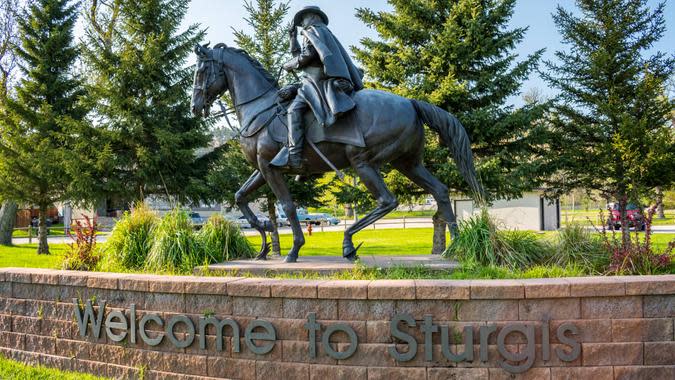
South Dakota
Huron
Mitchell
Aberdeen
The costs of living across the three most affordable places to retire in South Dakota are remarkably consistent. Mitchell and Aberdeen each have a cost of living that's about 79% of the national average. That makes Huron the outlier, but in the right direction -- cost of living there should run about 27% under the national norm.
The ZHVI scores are also similar for those same locations, with home values averaging out between about $171,000 and $209,000 for all three. Once again, Huron is significantly less expensive at about $171,000, but that still means that all three of these towns make for a great retirement option if you love the area.
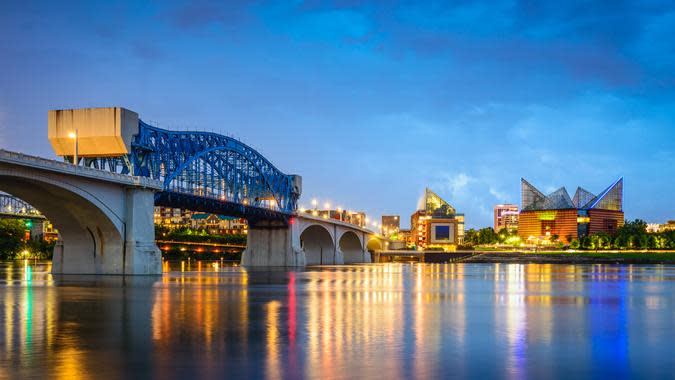
Tennessee
Kingsport
Johnson City
Bartlett
If you're thinking that your Tennessee retirement will mean living it up in Nashville, you might need to recalibrate your expectations --the Music City has become pretty pricey with median home values almost $420,000, according to Zillow. However, Bartlett, a suburb of Tennessee's other famous musical city -- Memphis -- is among the state's most affordable places to retire. Bartlett is much pricier, with a ZHVI of over $314,000 but an excellent 81 livability score.
If you're looking for something less expensive, look to the opposite part of the state, near the North Carolina and Virginia borders. There, east of Knoxville, you'll find Kingsport, which has a ZHVI score of a little over $200,000 and a 20% below-average cost of living.
Johnson City, just to Kingsport's southwest, is a little pricier in terms of home prices -- ZHVI of just over $235,000 -- but largely in line with Kingsport's costs of living.

Texas
Amarillo
El Paso
Corpus Christi
Texas offers a number of great places to live, and that's not just because of the abundance of Tex Mex and smoked brisket. The lowest livability score among these three is 69 (Corpus Christi), with Amarillo and El Paso ticking into the 70s. And while higher livability scores generally mean higher costs -- at least relative to their area -- the overall affordability of the state means you can take advantage of these cities at a fraction of the cost compared to other states. Cost of living in all three towns is between 16% and 22% below the national average, and homes are valued in the $181,000 to $206,000 range.
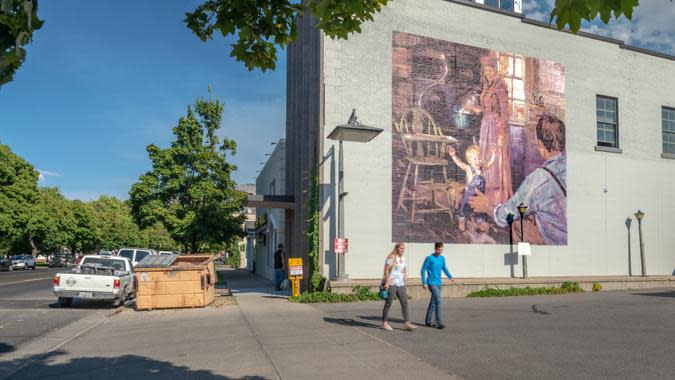
Utah
Logan
Ogden
Provo
Utah is largely a somewhat remote, mountainous state, which can be a major feature for retirees interested in spending their golden years gazing on panoramic views. But, if you're looking for those views to come from your back porch, you should be ready to spend compared to most other states.
Ogden and Logan have relatively cheap housing markets by Utah standards, but both leave you budgeting an average in the $360,000 to $380,000 range for a home. In Provo, those same values are more than $100,000 higher.
And basic cost of living is higher in Utah as well. Logan and Ogden both come in a little below the national average, but Provo will see you shelling out more for your monthly bills than the typical American, at about 9% more.
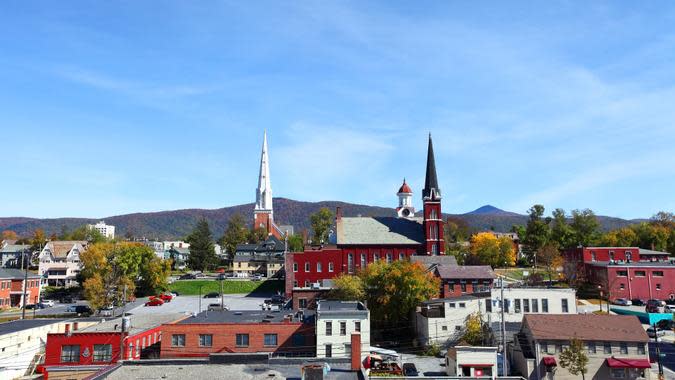
Vermont
Bennington
Rutland
Newport
Bennington, with its charming Main Street, is in the southwestern corner of Vermont on the New York border. In 1749, it was the first town chartered in Vermont by Gov. Benning Wentworth, and less than 30 years later, it played a role in the American Revolution. The ZHVI of all the Vermont homes in the study is less that $215,000, with Bennington's a few thousand dollars under that mark. All three Vermont locales have a cost of living about 15% below the national average, and around one-fourth of the residents of each are 65 or older.
Rutland, about an hour north of Bennington, is the gateway to the world-class Killington Ski Resort, a stop on the World Cup tour. Living in Newport, just south of the Canadian border, puts you along the southern short of Lake Memphremagog, a 27-mile lake that crosses the two countries. It has four-season recreational opportunities galore, including hiking or snowshoeing along any of 38 trails.
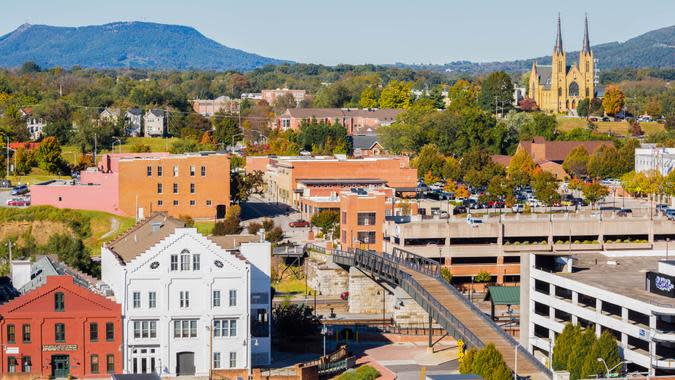
Virginia
Lynchburg
Roanoke
Hampton
Three of the most affordable Virginia locales for retirees feature a ZHVI score in the range of $216,000 to $233,500. Lynchburg stands out for the most affordable housing, and it also has the highest livability score at 82 and the lowest cost of living, 18% below the national average.
Roanoke checks in with a ZVHI score of just over $224,000 and is nearly 17% below the national average in terms of cost of living. Hampton is still below the national average as well, checking in at 12%.
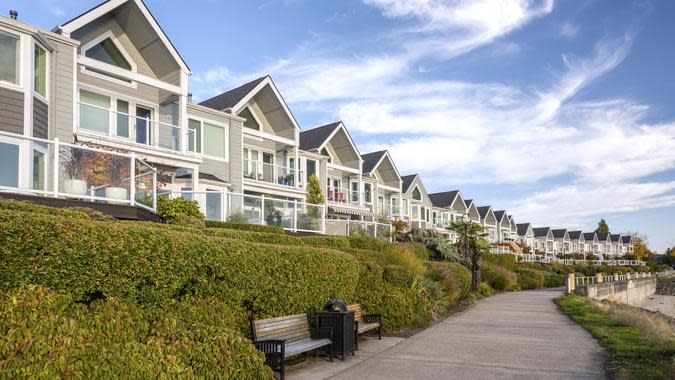
Washington
Kennewick
Spokane Valley
Spokane
The Pacific Northwest is a gorgeous natural setting to call home for your golden years, but it's pricey. The average home price in Washington state is just under $555,000, according to Zillow, with Seattle's average price at $832,000. For more affordable housing, retirees will need to look east. The ZHVI score for Spokane is just over $378,000 and that's the lowest level of these three locations identified in the study. Kennewick's houses have an average value of almost $400,000.
And the everyday costs are around the national average. Spokane and Kennewick each have costs just about 1% below the national average, but residents of Spokane Valley can expect to pay about 2% more than the average American for their regular bills.
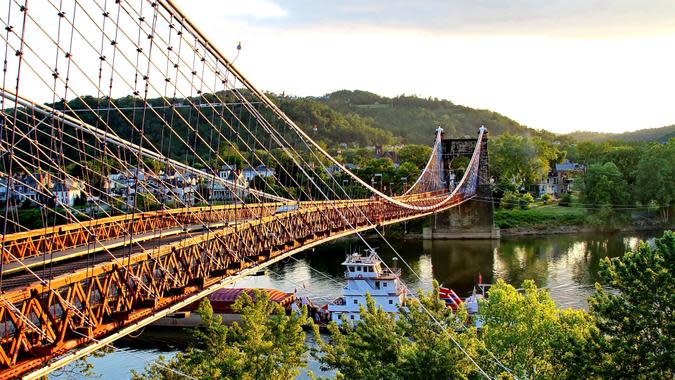
West Virginia
Weirton
Clarksburg
Wheeling
West Virginia provides some clear options for retirees looking to minimize their expenses and devote their available cash to hobbies or travel. All three of these cities have a cost of living at least 20% lower than the national average, and in Clarksburg, the number is about 28% less. And the cost of buying a home is likewise much lower than you would expect to pay elsewhere in the country.
The ZHVI score for Clarksburg is just below $94,000, leaving retirees buying a home there anything but blue. And while Weirton and Wheeling aren't quite that cheap, you'll pay about $125,000 for a home.
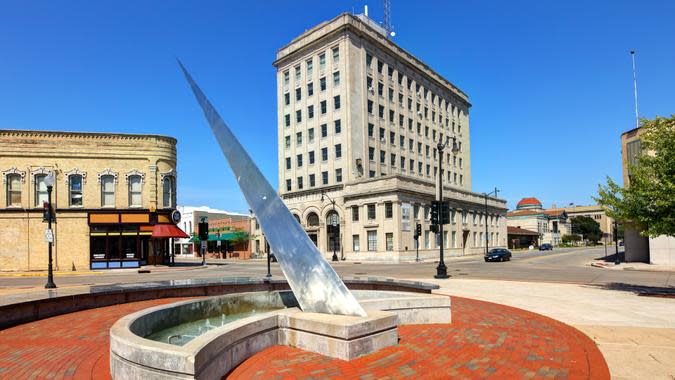
Wisconsin
Fond du Lac
Sheboygan
Oshkosh
While there are a lot of options for affordable living in Wisconsin, none will save you quite as much money as Fond du Lac. There, home values just barely reach $169,000 and the cost of living there will save you more than 22% compared to the national average.
But Fond du Lac also has a livability score of 74, and the other two places here can do a lot better than that. The remaining two cities have livability scores of 79 for Sheboygan and, b'gosh, Oshkosh registers an impressive 82. And Oshkosh is a bit pricier than the other places on the top three list, a ZHVI under $195,000 and cost of living more than 20% below the national average still sound like a good value.
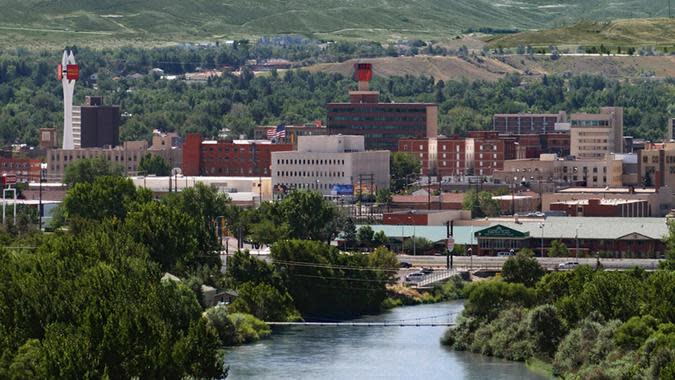
Wyoming
Sheridan
Green River
Rock Springs
If you hope to enjoy the majestic beauty of the Rockies during your retirement, few states might provide you with more opportunities than Wyoming. And while Wyoming certainly isn't one of the cheapest states in the country, the locales listed here are certainly going to present options within reach for a great many people as they end their careers.
All three towns have below average costs of living -- though less than 5% below average for Sheridan and Green River. Rock Springs, though, will save you more than six cents on the dollar for your basic costs compared to the average American.
In Rock Springs and Green River, you can find homes for less than $250,000, while Sheridan's LHVI is much higher at $383,257. You can't go wrong with in comes to livability, though. Each of the three locations has a score of 82 to 83.
More From GOBankingRates
Methodology: To find affordable places to retire across the U.S., GOBankingRates first identified the 15 biggest places by population in every state according to data from the U.S. Census Bureau's 2021 American Community Survey. Then, each place was scored against all others in its state on the following affordability and quality measures: (1) the percent of the total population 65 and older, (2) the average typical home value from January 2022 to January 2023, according to the Zillow Home Value Index data, (3) the cost-of-living index score, according to Sperling's Best Places, and (4) the livability score from AreaVibes. In the final ranking, factor (2) and (3) were given twice as much weight as the other factors, while factor (1) was weighted 0.5x. The three cities and towns in every state with the best overall scores were then ranked, with No. 1 being the most affordable for its quality. Locations had to have data available for all four factors to be included in the final ranking and have a livability score above 55. All data was collected on and up to date as of March 3, 2023.
This article originally appeared on GOBankingRates.com: The Most Affordable Places To Retire Near You

 Yahoo Finance
Yahoo Finance